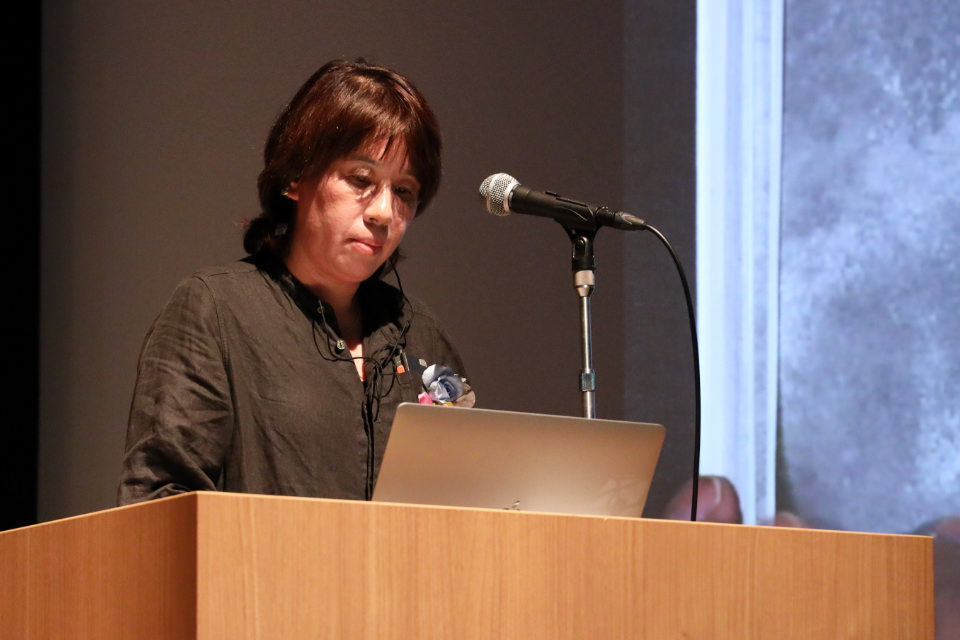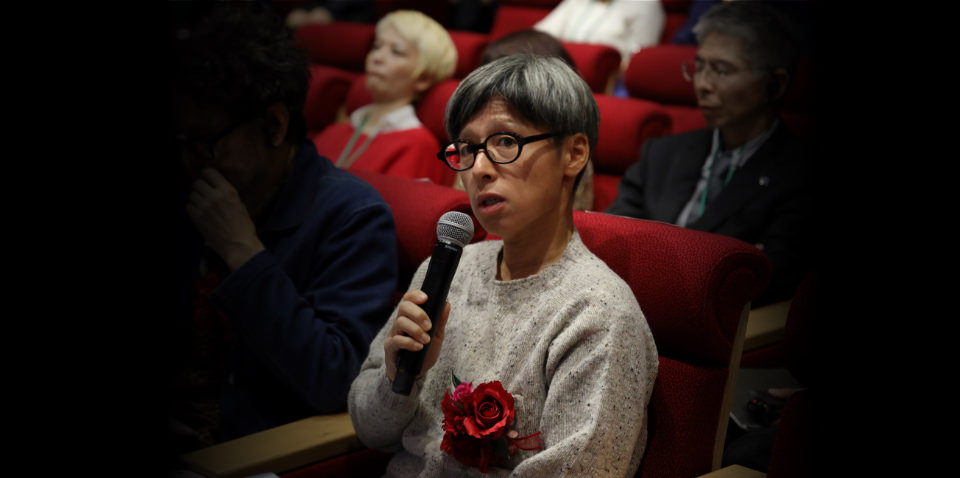PRESENTATION
My mother lost the ability to recognize even her family about eight years after she was diagnosed with Alzheimer-type dementia. Seeing my mother in this state made me realize that I too would someday lose my memory. That inspired me to preserve my precious memories as a means of not forgetting them. One of those precious childhood memories was going to my grandparents' house with my mother. Even though all I did was walk along the road with my mother to my grandparents' house, the memories of my excitement at meeting my grandparents, the conversations with my mother, our detours and side trips — all of these are precious memories that remain with me.
My grandparents' house no longer exists. I decided to visit the location for the first time in 40 years. I photographed the road to their house after missing it several times. Photos taken in monochrome are redolent of the past, even when taken today, and seem to call out to us. Dim childhood memories started to come back. The beach my family went to every year. The park I used to play in all the time by myself. The old house we lived in back in the day. I took my current family to the beach and park and other places and photographed my daughter where my childhood self once stood.
This collection includes photos of myself taken from old photo albums. I initially settled on “A Map of Memories” for the title of the work, given the town, the road, and my childhood memories. But later as I continued to work on the collection, I suddenly noticed something. I noticed that I was engaging in a dialogue with my mother, even though she has lost the facility of language and cannot speak anymore: “I wonder what the people who used to live here are doing now?” “There are a lot less shops along the shopping street than there used to be.” “Those hydrangeas you loved are in bloom right now, you know.”
While organizing and photographing my mother's things in our family home, I came across some pastel paintings by my mother that she had worked on before being diagnosed with dementia. The date was inscribed on the back of the sketchbook. A natural law of dementia is that you lose memories in reverse order. In my mother's paintings, I could see her paintings look more and more childlike as her disease progressed, as if she were steadily retreating from the present into the past all the way back to her own childhood. I thought maybe my mother is happy living in a world on a different time axis from me. But I have no way of knowing what is really going on in her mind. I imagined that perhaps she is in a dark, colorless world, which I expressed in this way in my work.
For this collection, I decided to make the photo of the road semi-transparent and make the photos of the places we stopped at on our walks and of my childhood memories look faintly transparent. The road is like a pillar and has taken on all kinds of meaning. I see it like my past footprints, like a path connecting my mother and me, and like a guidepost pointing to what lies ahead of me. Because the photo of the road is semi-transparent, as you turn the pages, the road can be seen as a faint transparency. I arranged the photos so the left side depicts the road I have walked so far and the right side depicts the road I will travel along next. I feel this exercise in a way is preparing myself for peacefully growing old.
I would like to explain my exhibit. The two-square-meter wooden panel on the right represents how our memories are continuously being overwritten, in the way that we have very dim memories, vague memories, and clear memories. When a memory is revived, sometimes it is brought back from the entire scene in front of our eyes and sometimes it is brought back from just the silhouette of a part of a building or a pole. My aim with the exhibit was to express this phenomenon as well.
The panel on the left expresses the transformation in your feelings when you take in the scene. Sometimes when a memory comes back you have a clear recollection of it. But I tried to express, with the panel's thickness and the photo density, ungraspable memories that again quickly recede from view.


Yours is a carefully crafted, highly refined work. From the work I felt an urgency, in that as the memories of someone close to you, your mother, disappear, it's the same as you disappearing. You said that you take photographs to preserve memories, but I could sense some impurities had been captured in the photos, things that could be hindrances the more powerful the memory. What are your thoughts on this phenomenon? Furthermore, what are you planning to do next?
(Eguchi)
I'm afraid I'm still not able to understand to that depth. At present, I'm photographing my mother's things and I hope to come up with some combination between them and my own things.

Judges’s Comment
Paul Graham (selector)
I found this work to be incredibly beautiful and meticulously put together. When I saw the work in book form especially, I was struck by its brilliance as I turned the pages. Some memories fade, others get placed on top of each other, and other stick with you. I get that your work is a personal history, including paintings by your mother and combining photos that you took with old snapshots. You used a very clever technique that feels like peeling away layer after layer of onion skin to gradually approach the core. Each layer of skin is peeled away before reaching the core, but each layer represents a precious memory that cannot be lost — for example, your relationship with your mother, your childhood memories — I was strongly touched by how important these are.